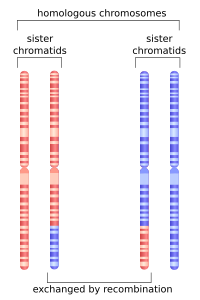
Photo from wikipedia
Simple Summary Ovarian cancer is the most lethal gynecologic malignancy and is characterized by genomic instability and DNA repair defects. PARP inhibitors (PARPi) changed the treatment paradigm of ovarian cancer… Click to show full abstract
Simple Summary Ovarian cancer is the most lethal gynecologic malignancy and is characterized by genomic instability and DNA repair defects. PARP inhibitors (PARPi) changed the treatment paradigm of ovarian cancer but the development of resistance to PARPi is a pressing clinical challenge. In this review, we discuss how RecQ helicases can be targeted as a novel therapeutic strategy to prevent such treatment resistance. The combination of helicase inhibitor with a PARP inhibitor (PARPi) or ATR inhibitor may overcome PARPi resistance in ovarian cancer. Abstract RecQ helicases are essential for DNA replication, recombination, DNA damage repair, and other nucleic acid metabolic pathways required for normal cell growth, survival, and genome stability. More recently, RecQ helicases have been shown to be important for replication fork stabilization, one of the major mechanisms of PARP inhibitor resistance. Cancer cells often have upregulated helicases and depend on these enzymes to repair rapid growth-promoted DNA lesions. Several studies are now evaluating the use of RecQ helicases as potential biomarkers of breast and gynecologic cancers. Furthermore, RecQ helicases have attracted interest as possible targets for cancer treatment. In this review, we discuss the characteristics of RecQ helicases and their interacting partners that may be utilized for effective treatment strategies (as cancers depend on helicases for survival). We also discuss how targeting helicase in combination with DNA repair inhibitors (i.e., PARP and ATR inhibitors) can be used as novel approaches for cancer treatment to increase sensitivity to current treatment to prevent rise of treatment resistance.
Journal Title: Cancers
Year Published: 2022
Link to full text (if available)
Share on Social Media: Sign Up to like & get
recommendations!